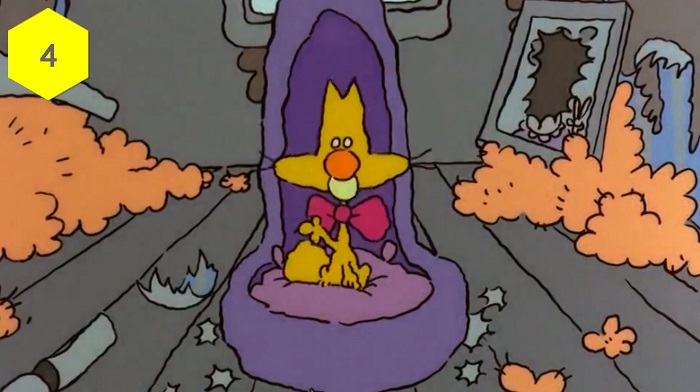Turner Classic Movies (TCM) is dedicating the whole of Sunday evening, 9 April, 2017 to a primetime program of screenings and interviews on animated short films produced by the National Film Board of Canada. The program includes thirty of the NFB’s master works by filmmakers such as Caroline Leaf, Cordell Barker, Norman McLaren and Ryan Larkin among many others.
This event was curated by film analysts Ellen Besen (NFB director, MWP author – Animation Unleashed) and Aubry Mintz (CRC Press co-author – Ideas for the Animated Short, head of animation CSULB). Beginning at 8:00 pm Eastern, the program offers four hours of film, with commentary by Mintz and Besen in conversation with TCM host Ben Mankiewicz.

Well known and well-loved classics such as The Cat Came Back and Walking are included in this one time broadcast which becomes more than a survey due to the discussion. Though most of the films are available for online viewing on the NFB’s own website, the analysis that Besen and Mintz bring to the films dissects the story line and points out elements of colour, lighting and concept often overlooked. Along with insights into process and history, Besen and Mintz bring the making of these films to life. Also, TCM’s hosted format creates an opportunity for viewers to share in the knowledge of the two guest speakers.
Digging deep into the NFB archives, the curators have created a program which features old favourites along with titles that are rarely seen, each one intended to engage the audience in a different way.
“And that’s what the TCM program is really about for both of us” says Besen, “It’s not just knowing the filmmakers and sharing the backstage stories and the myths, it’s the opportunity to do some fresh analysis and find new ways of understanding these films.”
Besen and Mintz do more than look at the surface of film. They pry into the deepest underlying story strategies. For example you can have two films that are essentially the same story, so why is one brilliant and the other mediocre? The answer can be found in the strangest places – in props, line quality or the compression of time, anywhere really that filmmakers find potential for analogous meaning.
“We’re looking at vast amounts of information” adds Mintz, “And whittling it down to the heart of the story. We’re taking all the aspects of the films – what’s the colour doing, what’s the movement doing, what’s the dialogue doing, and getting it down to the main themes and asking ok, what are these films really about?”

Walking by Ryan Larkin is commonly thought to be an animated study of how people walk but Besen and Mintz sensed there was something else going on here. Searching for clues in the lines and marks, they concluded – especially when factoring in Larkin’s actual life – that this is a film about someone who feels very isolated from the world. The key to this understanding comes from studying the main character in all his details: how he walks, how he’s rendered, how he holds his body, especially compared to the crowd around him. The embodiment of this emotion is what makes the film so compelling.
Masterful at every level, all these films are worth watching and worth taking seriously. Screening them in the context of the curators’ commentary – drawn from interviews with the directors plus years of teaching and film analysis, along with their own production history – lifts the experience to the next level. “We couldn’t be more pleased to be bringing these wonderful productions into your homes and your hearts,” Mintz ends.

